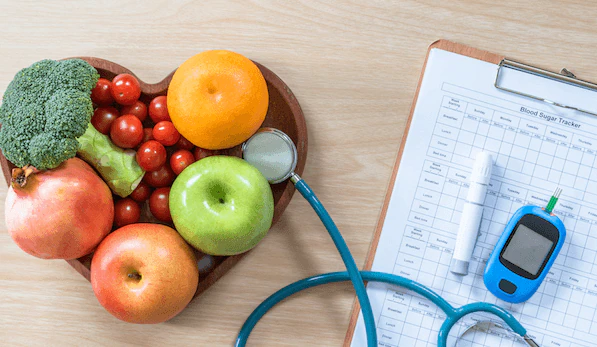For those with diabetes, it’s important to have a healthy diet and keep track of blood sugar levels. (Photo courtesy of the U.S. Department of Health and Human Services)
The last time Rock Hill resident Ashlie Khanted checked the price of her insulin in 2020, “it was around $370-$400 a vial.”
She said she goes through four or five vials a month.
Khanted has Type 1 diabetes, which means her pancreas doesn’t produce any insulin naturally. That means her cells can’t get the necessary sugar needed to produce energy to sustain life.
Type 2 diabetes is similar, but usually the pancreas can still create insulin. The amount is just too small.
More than 530,000 people in South Carolina — or 13.2% of the adult population — have been diagnosed with diabetes. And an estimated 123,000 additional people have diabetes but don’t know about it, according to the American Diabetes Association.
To treat her diabetes, Khanted uses an insulin pump that acts as an external pancreas. It is programmed to respond to her glucose levels and requires rapid-acting insulin.
Regular insulin, which takes double the amount of time to reach peak levels, may cost significantly less — and you can buy it at Walmart’s pharmacy for around $35. But it’s not ideal, especially for those with Type 1, said Marc-André Cornier, a professor at the Medical University of South Carolina.
“It might keep me alive, but my quality of life would be awful,” Khanted said.
Insulin isn’t the only expense when it comes to diabetes.
Khanted also has to replace the tubing and cartridges on the pump every three days. Those supplies cost about $700 a month, she said. On top of that are a number of health problems that are caused or made worse by diabetes that also require treatment. Some are unavoidable.
The cost of being diabetic is astronomical, she said.
People with diabetes pay about 2.3 times more in medical expenses than those without, according to the diabetes group.
The federal Inflation Reduction Act will ensure that the cost of insulin for those on Medicare will not go over $35 for a month’s supply starting next year, the White House announced in August.
But for those not on Medicare, the cost of insulin may remain high through private insurers.
There are certainly situations where someone can’t afford the insulin they need to survive, Cornier said.
“They have to ration it, or then they don’t take it, and then they get very sick and end up in hospital,” he said.
Some people have found other ways of getting what they need.
One person with diabetes in South Carolina, who did not wish to be named for fear of implicating herself and others, gets extra insulin prescriptions from her doctor and saves them to give to those who need insulin but can’t afford it.
“There’s a whole community of people like that on Facebook, and they have to (share insulin) covertly so they don’t get in trouble …,” the person said. “We do look out for each other.”
For some, the cost of having diabetes can be overwhelming.
“Having diabetes does not just mean you’re taking insulin everyday and you’re good to go” — it’s a lot more than that, Khanted said.


